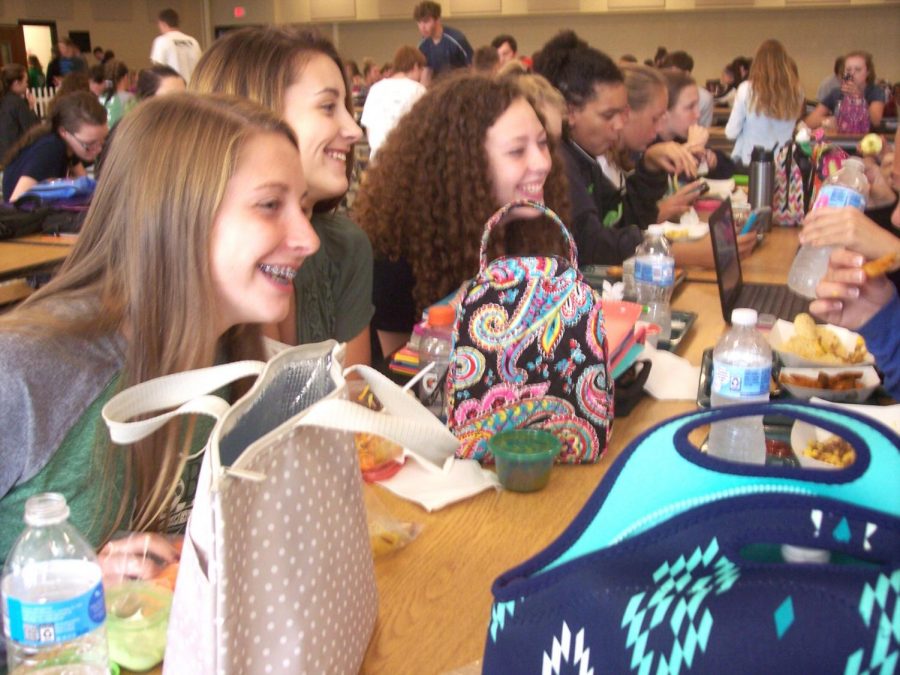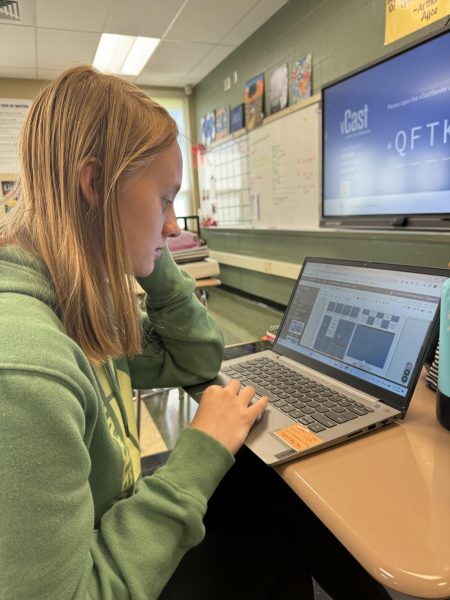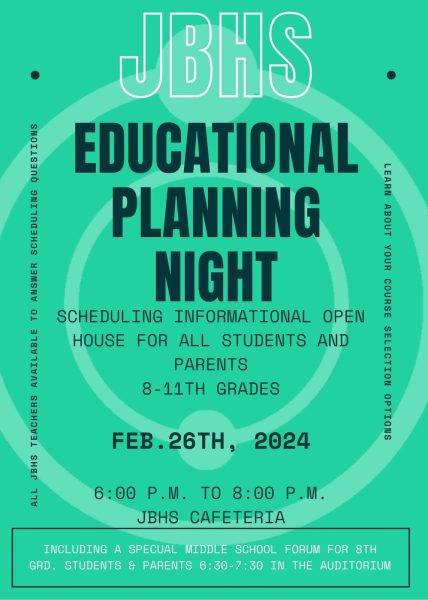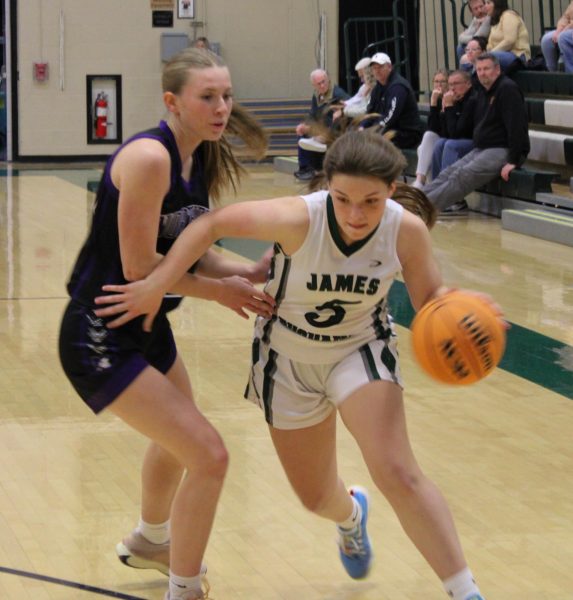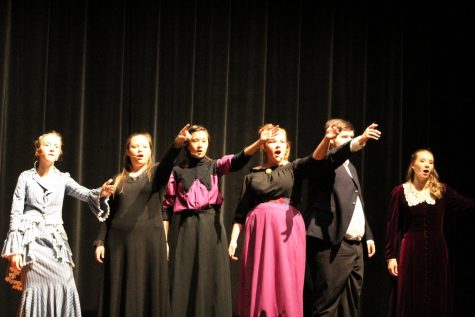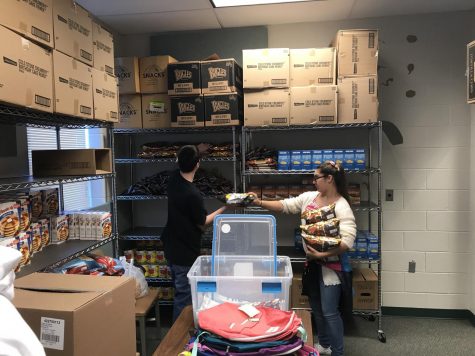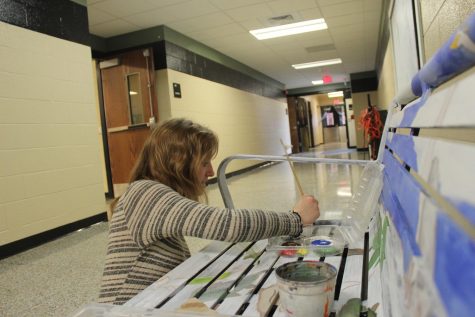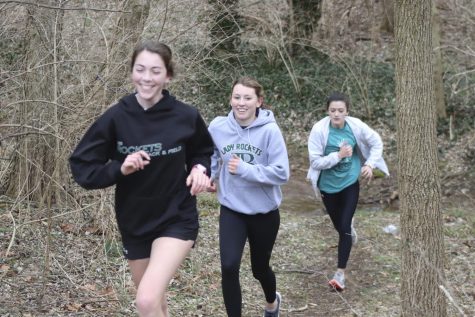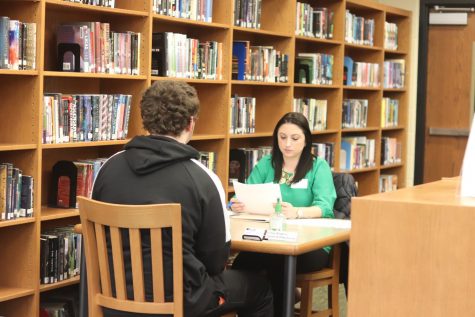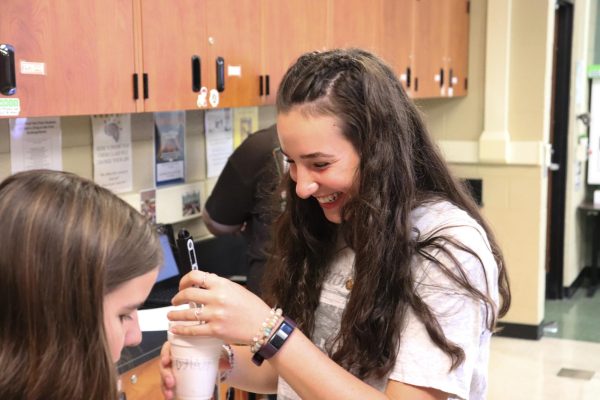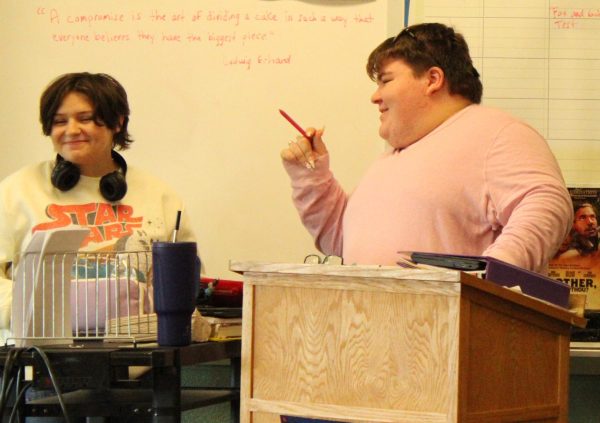School Lunch 101
Ashley Dukehart (9), Julia Trei (9), and Brynn Taulton (9) smile as they share a funny moment with their friends.
In the cafeteria, there are students in the lunch lines and at the tables. With all of the students in the cafeteria, there are many conversations going on simultaneously. As the students get in the lunch lines, the lines get longer and longer. Finally after waiting in line, students take their lunches back to their seats, and begin to devour their tray filled with goodies. It does not take long for the trays to be completely empty, but it does take time to prepare the foods that will be served on the trays.
“We normally start making lunches around 8:30 and then we are done by 10:45,” Rhonda Lyons (Staff) explained. “The lines are split up, so in between lines, we prep food for the next line. When we are low on food, I will plot it down on a record sheet and write down how many I started with and how much I will add next time.”
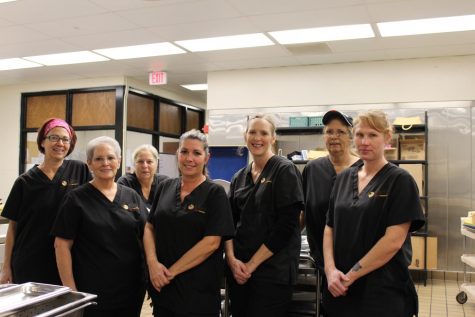
Not only do the meals take time to make, they must also follow the guidelines that are required by the Food Service Department. Those guidelines are very thorough and contain the essentials needed in every meal.
The lunch ladies normally make the lunches, but Adam Carlson (Faculty) is the one who manages the lunch program to the way that the district wants it to run.
“Complete meals have to be under one thousand four hundred milligrams of sodium,” Carlson said. “Fats needs to be less than 35% of calories, 80% of our offerings have to be whole-grain rich, with the exception of our pizza doughs, and vegetables are contained in every school-meal lunch.”
“Basically what I do is I plans out the menus, plan the schedule for the staff, implement the recipes needed in the lunches, and provide culinary training.” Carlson said. “I try to keep up with trends in the food service. I usually read Food Service Director Magazines and find some ideas in there. Once I find some ideas, I will try to add them to our school.”
Carlson tries to come up with ideas of his own, but he is always open to suggestions made by students who have their own thoughts on what they would like to see on the menu.
“I like the fish taco because it is really healthy and tastes really good,” said Gabe Bard (11). “One thing that I would like to see on the menu would be grilled chicken. Grilled chicken is a healthy food and I believe the kids at JB should eat healthy. Plus, who doesn’t like grilled chicken?”
”I like the jacked-up fries because it is very creative,” said Mason Younker (10). ”It’s like nachos and fries mixed together. I think that our school has a bunch of good choices, but if I had to pick one thing to be added to the lunch menu, then it would be steak since steak is a good source of protein.”
In order to have school lunches, we have to have money. “On estimate, the Food Service Department spends around $600,000 to feed students in one school year.” said Carlson. “In one school year, we will make a little over $1,000,000 in revenue.”
The school cafeteria is where people convene together and socialize with their peers. During lunch, it is the one place where students and staff can enjoy themselves.
“I like my job. I started at the middle school only working four hours a day,” Lyons said. “Eventually, I came up here and now instead of working four hours a day, I have a full-time position being the kitchen manager.”
My favorite thing about working as a lunch lady is probably the kids. It is nice to see the students and interact with them at this age. — Rhonda Lyons
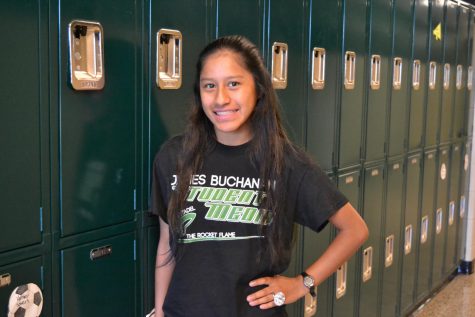
Megan Rummel lives in St. Thomas, PA. She lives with her mom, dad, and her two grandmas. Her brother lives in Chambersburg and is a father to his son...



